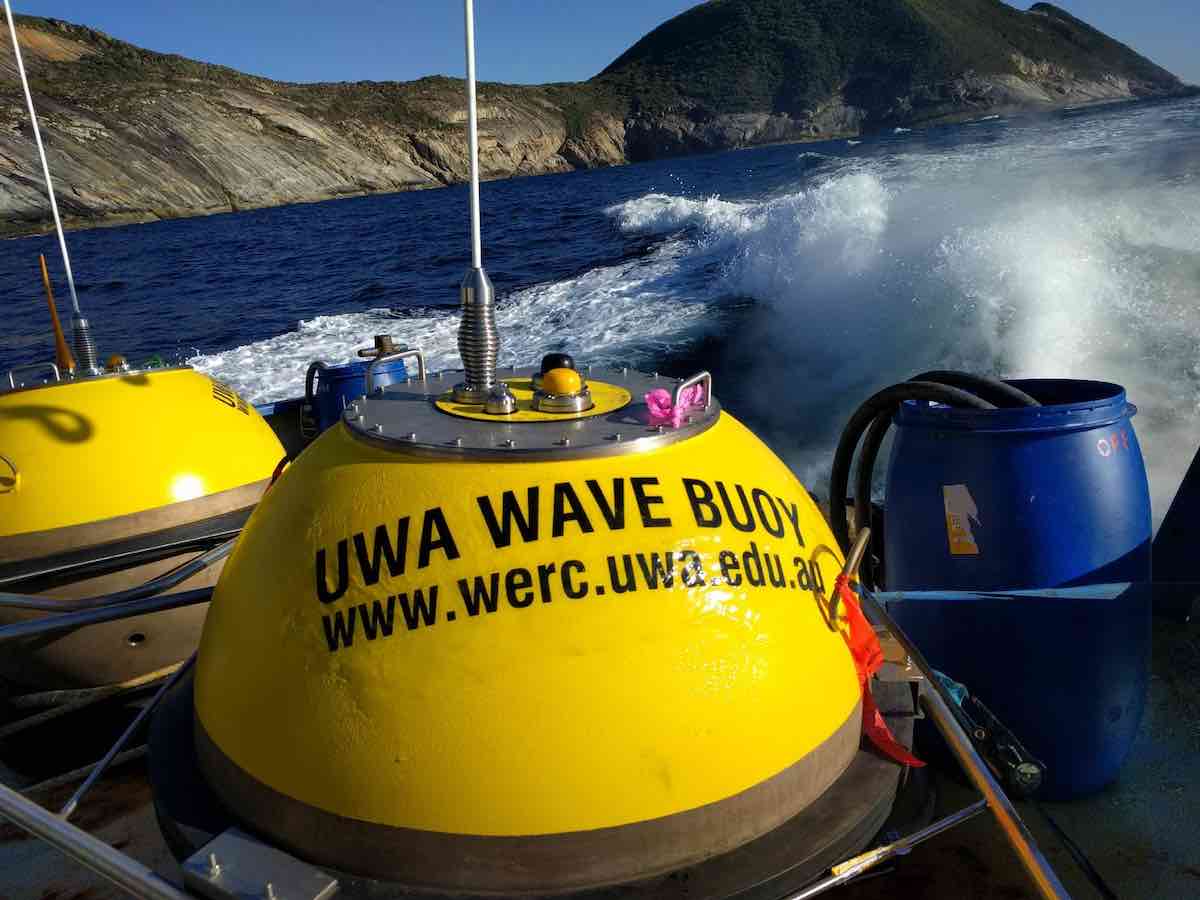Researchers from the University of Western Australia’s Wave Energy Research Centre have deployed a second wave monitoring device off the south coast city of Albany in a region researchers believe could serve as an important showroom for wave energy technology.
Utilising the consistent motion of ocean surface waves to generate energy, wave energy technology is one of those renewable energy options that boasts significant potential but has suffered from a lack of financing and support.
Nevertheless, considering the virtually infinite potential for energy generation on a planet with 71% of its surface covered by water, wave energy technology remains a darling of researchers and renewable energy proponents.
The University of Western Australia’s (UWA) Wave Energy Research Centre (WERC) is one of those institutions seeking to prove the viability and potential of wave energy technology.
A report by ABC News last week highlighted the work of UWA’s WERC on the back of the news that the researchers had deployed a second monitoring buoy, located in King George Sound off Seal Island.
One of two surface wave buoys – the other off the coast of Torbay, west of Albany – the new wave-data recording buoy is part of the Centre’s efforts to highlight the potential of the Albany region for the future development of the emerging green technology.
Yeaaahhh BUOY! 🌊🌊🌊
New wave measurement technology launched off Albany by the #UWA led Wave Energy Research Centre will place WA at the forefront of marine renewable energy research! https://t.co/pgksGGub68 pic.twitter.com/wPVgf1ogV5
— UWA (@uwanews) July 12, 2018
Situated at one of the most southerly points of Australia, Albany is ideally suited to developing wave energy technology, benefiting as it does from some of the world’s most consistent swells thanks to the Southern Ocean which sits between Australia and Antarctica.
“Everyone has been focused on the stretch of coastline that faces Antarctica,” said Dr Wiebke Ebeling, WERC’s Centre Manager, speaking to ABC News. “Those waves are very good and exceptionally powerful … [but] for some technologies they are just a tad too powerful.”
One of Albany’s potential benefits is the variety of ocean conditions in proximity. Despite being separated by only 20 kilometres, WERC’s two buoys experiences dramatically different ocean conditions.
Specifically, the Torbay buoy has survived swells up to 15 metres, whereas the new Seal Island buoy is sheltered by the Flinders Peninsula.
With different conditions comes the need for different technology and given that Albany provides access to such a wide array of ocean conditions it could be the perfect “showroom” for wave energy technology. Or at least, that’s the hope of Ebeling and WERC.
“Some are suited to the high energy wave climate out at Torbay and some are more suited to the milder winter and wave climate at King George Sound,” Dr Ebeling said, speaking to ABC News.
“We’re casting our net wider in talking to industry. This is very attractive — Albany is like a hotspot for wave energy internationally, which means we can attract a suite of different technologies from different industry developers.”
“Our vision is for Albany to become the world’s first ocean energy market demonstration site. [This would be] sort of more like the showroom in a car dealership,” Dr Ebeling said.
“Albany is perfect for that because then we can have these different locations around our coastline and different technologies that are suited to that location.”
The work of Wave Energy Research Centre serves as an important second opportunity for the region’s wave energy ambitions after the Western Australian Government terminated a $16 million contract in early 2019 that it signed with Carnegie Clean Energy to build a wave farm off the coast of Albany.
Following the WA Government’s decision, Carnegie suffered a turbulent period of time as it sought to keep its head above water.
The company was forced into administration in March as a result of the WA Government’s decision, and it wasn’t until October 2019 that the company was able to raise the necessary $5.5 million to avoid liquidation and was reinstated onto the ASX.
In August 2019, the company switched on the Garden Island Microgrid, a 2MW solar and 2MW/0.5MWh battery storage project in Western Australia which is generating electricity for Australia’s largest naval base, HMAS Stirling.
By the end of the year, the project had reached a “significant milestone” and delivered more than 1,000MWh of renewable electricity for HMAS Stirling.
In a quarterly report published by Carnegie Clean Energy in early 2020, the company explained that it had “been completing a range of corporate activities associated with the reinstatement of the business, delivering on the CETO technology development pathway outlined in the Prospectus and operating Carnegie’s Garden Island Microgrid asset” – referring to both the Garden Island Microgrid and its CETO wave energy technology.
A month later the company announced that it continued to progress on the development of its CETO 6 wave energy technology and that the company believed could improve the performance of CETO through greater energy capture, more efficient conversion into electricity, higher system reliability, and reduction in cost.
Hopefully, then, both Carnegie Clean Energy and the Wave Energy Research Centre will be able to deliver on the promise of wave energy technology for Albany, and indeed turn the region into a showroom for the technology










